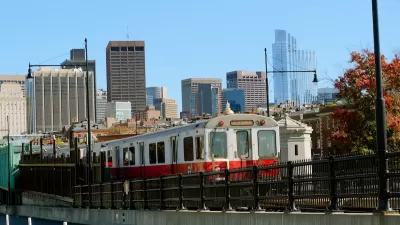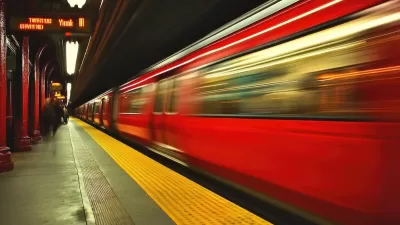An interesting pitch in Boston: use transportation network companies (TNCs) like Uber and Lyft to provide paratransit services.
"As the MBTA looks to cut costs and improve service, a state official [recently] said the T could save as much as $47 million a year on The Ride program by raising fares, reducing service and forging partnerships with the taxi industry and companies like Uber and Lyft," reports Colin A. Young.
The pitch for a shift toward TNCs comes as the cost of paratransit services offered by The Ride are expected to jump from the current level of $97 million to $108 million by 2017. According to Young, Michael Lambert, MassDOT's deputy administrator for transit, recently presented several options for addressing those costs to the MBTA's Fiscal and Management Control Board. Options under consideration include "raising fares to the maximum allowed by the Americans with Disabilities Act, limiting The Ride service to only the area it must cover under the ADA, and reducing some of The Ride’s overhead costs by partnering with taxis or other transportation companies."
The MBTA is already exploring options for integration with ride-hailing services. According to Young, "the T [earlier this month] a pilot program that allows customers who use The Ride to hail a subsidized ride with a handicapped accessible taxi.
FULL STORY: Partnership Between MBTA’s The Ride And Uber Coming For Paratransit Passengers

Trump Administration Could Effectively End Housing Voucher Program
Federal officials are eyeing major cuts to the Section 8 program that helps millions of low-income households pay rent.

Planetizen Federal Action Tracker
A weekly monitor of how Trump’s orders and actions are impacting planners and planning in America.

Ken Jennings Launches Transit Web Series
The Jeopardy champ wants you to ride public transit.

Milwaukee Road to Get Complete Streets Upgrades
The city will reduce vehicle lanes and build a protected multi-use trail including bioswales and other water retention features on its ‘secret highway.’

Tackling Soil Contamination With Nature-Based Solutions
Los Angeles County residents and experts are turning to nature-based methods like bioremediation to address long-standing and fire-exacerbated soil contamination without resorting to costly and disruptive removal.

Rebuilding Smarter: How LA County Is Guiding Fire-Ravaged Communities Toward Resilience
Los Angeles County is leading a coordinated effort to help fire-impacted communities rebuild with resilience by providing recovery resources, promoting fire-wise design, and aligning reconstruction with broader sustainability and climate goals.
Urban Design for Planners 1: Software Tools
This six-course series explores essential urban design concepts using open source software and equips planners with the tools they need to participate fully in the urban design process.
Planning for Universal Design
Learn the tools for implementing Universal Design in planning regulations.
Ada County Highway District
Clanton & Associates, Inc.
Jessamine County Fiscal Court
Institute for Housing and Urban Development Studies (IHS)
City of Grandview
Harvard GSD Executive Education
Toledo-Lucas County Plan Commissions
Salt Lake City
NYU Wagner Graduate School of Public Service





























